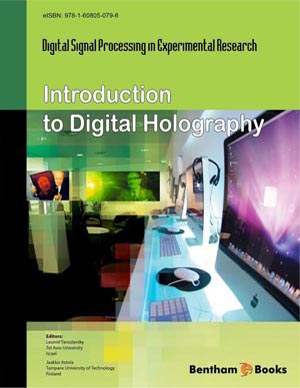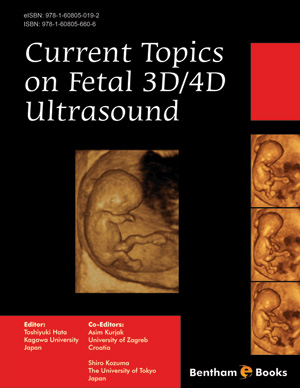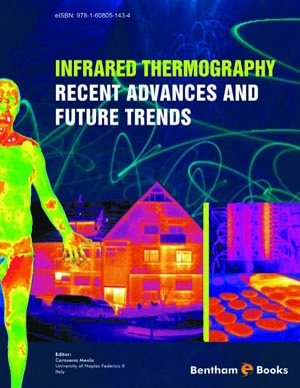Foreword (Survival of Holography provided by Signal Processing)
Page: i-i (1)
Author: A. Lohmann
DOI: 10.2174/97816080507961090101000i
Preface
Page: ii-iv (3)
Author: Leonid Yaroslavsky and Jaakko Astola
DOI: 10.2174/9781608050796109010100ii
Principles of Holography
Page: 1-7 (7)
Author: Leonid Yaroslavsky and Jaakko Astola
DOI: 10.2174/978160805079610901010001
PDF Price: $30
Abstract
In this chapter, we outline physical principles of holography and introduce mathematical models of recording and reconstruction of hologram and diffraction integrals used in these models.
Holographic Transforms in Digital Computers
Page: 8-36 (29)
Author: Leonid Yaroslavsky and Jaakko Astola
DOI: 10.2174/978160805079610901010008
PDF Price: $30
Abstract
This chapter is devoted to discrete representation of diffraction integrals. It expounds principles of the discretization and their applications to derivation of different modifications of Discrete Fourier Transforms, Discrete Fresnel Transforms and Kirchhoff-Rayleigh-Sommerfeld transforms. The chapter is supplemented with appendices that contain relevant mathematical details, description of the new algorithm for signal convolution via fast cosine transform and a summary of discrete diffraction transforms.
Digital Recording and Numerical Reconstruction of Holograms
Page: 37-58 (22)
Author: Leonid Yaroslavsky and Jaakko Astola
DOI: 10.2174/978160805079610901010037
PDF Price: $30
Abstract
Digital recording and numerical reconstruction of holograms is one of the main tasks of digital holography with numerous applications. This chapter exposes off-axis and on-axis methods of hologram digital recording, introduces the notion of the point-spread function of numerical reconstruction of hologram, which is the main metrological characteristics of the process, presents results of evaluation of point-spread functions of numerical reconstruction of Fourier and Fresnel holograms and discusses zones of applicability of different reconstruction algorithms
Computer Generated Holograms (CGH): Principles
Page: 59-69 (11)
Author: Leonid Yaroslavsky and Jaakko Astola
DOI: 10.2174/978160805079610901010059
PDF Price: $30
Abstract
This chapter introduces basic principles and mathematical models of computer-generated holography and reviews spatial light modulators for recording of computer-generated holograms.
Hologram Encoding for Recording on Physical Media
Page: 70-88 (19)
Author: Leonid Yaroslavsky and Jaakko Astola
DOI: 10.2174/978160805079610901010070
PDF Price: $30
Abstract
The purpose of hologram encoding is converting complex valued samples of mathematical holograms obtained in the result of synthesis of computer-generated holograms into data that can be used to directly control physical parameters of recording media. This chapter overviews different hologram encoding methods oriented on different recording media that can be used for this purpose.
Optical Reconstruction of Computer-Generated Holograms
Page: 89-109 (21)
Author: Leonid Yaroslavsky and Jaakko Astola
DOI: 10.2174/978160805079610901010089
PDF Price: $30
Abstract
Computer-generated holograms are used as optical elements in optical setups. This chapter analyses how methods of generating, encoding and recording computer-generated hologram affect the results of their optical reconstruction.
Computer-Generated Holograms and Optical Information Processing
Page: 110-128 (19)
Author: Leonid Yaroslavsky and Jaakko Astola
DOI: 10.2174/978160805079610901010110
PDF Price: $30
Abstract
A remarkable property of lenses and parabolic mirrors is their ability of performing, in parallel and at the speed of light, Fourier transform of input wave fronts and to act as “chirp”- spatial light modulator. This basic property enables creating optical information processing systems for implementation of optical Fourier analysis, image convolution and correlation. In this chapter, basic properties of lenses and parabolic mirrors relevant to optical information processing are briefly explained, elements of the theory of optical correlators for reliable target location in images are an introduced and their different implementations of optical correlators are described.
Computer-Generated Holograms and 3D Visual Communication
Page: 129-145 (17)
Author: Leonid Yaroslavsky and Jaakko Astola
DOI: 10.2174/978160805079610901010129
PDF Price: $30
Abstract
This chapter is devoted to synthesis and application of computer-generated display holograms for 3D visualization and communication. It introduces a computer generated hologram based 3-D communication paradigm, discusses properties and limitations of human visual system relevant to 3D visualization and describes several specific methods for synthesis of computer-generated hologram capable of reproducing 3D sensation and possible approaches to designing 3D holographic displays
Image Processing Methods
Page: 146-187 (42)
Author: Leonid Yaroslavsky and Jaakko Astola
DOI: 10.2174/978160805079610901010146
PDF Price: $30
Abstract
Work in digital holography always involves image processing, such as image denoising, deblurring, resampling, geometrical transformation and alike. In this chapter, basic approaches and methods of image processing most relevant to applications of digital holography are reviewed.
Index
Page: 188-189 (2)
Author: Leonid Yaroslavsky and Jaakko Astola
DOI: 10.2174/978160805079610901010188
Abstract
Full text available
Introduction
This eBook is a collection of comprehensive and cutting edge book articles written by leading experts on digital signal and image processing in general, and specifically book written by one of pioneers of digital holography, one of the foremost branches of the image sciences and modern information technology. It covers all the basic aspects of digital synthesis and numerical reconstruction of holograms, beginning from digital holographic transforms, going on to fast numerical algorithms for reconstruction of digitally recorded holograms, and then to computer generated holograms and their applications in hybrid digital-optical image processing and 3D visualization and communication. It also offers a comprehensive review of image digital processing methods most relevant to digital holography. The volume appears at an appropriate time, i.e. while the field of optics is mutating from micro to nano and advanced optical technologies are becoming digital. It is written for researchers and advanced graduate and PhD students in the field of optics, photonics, electrical engineering, and biomedical engineering and related branches of experimental physics and natural sciences and should prove to be of great value to them. It can also be used as a text book for one-semester course.




















